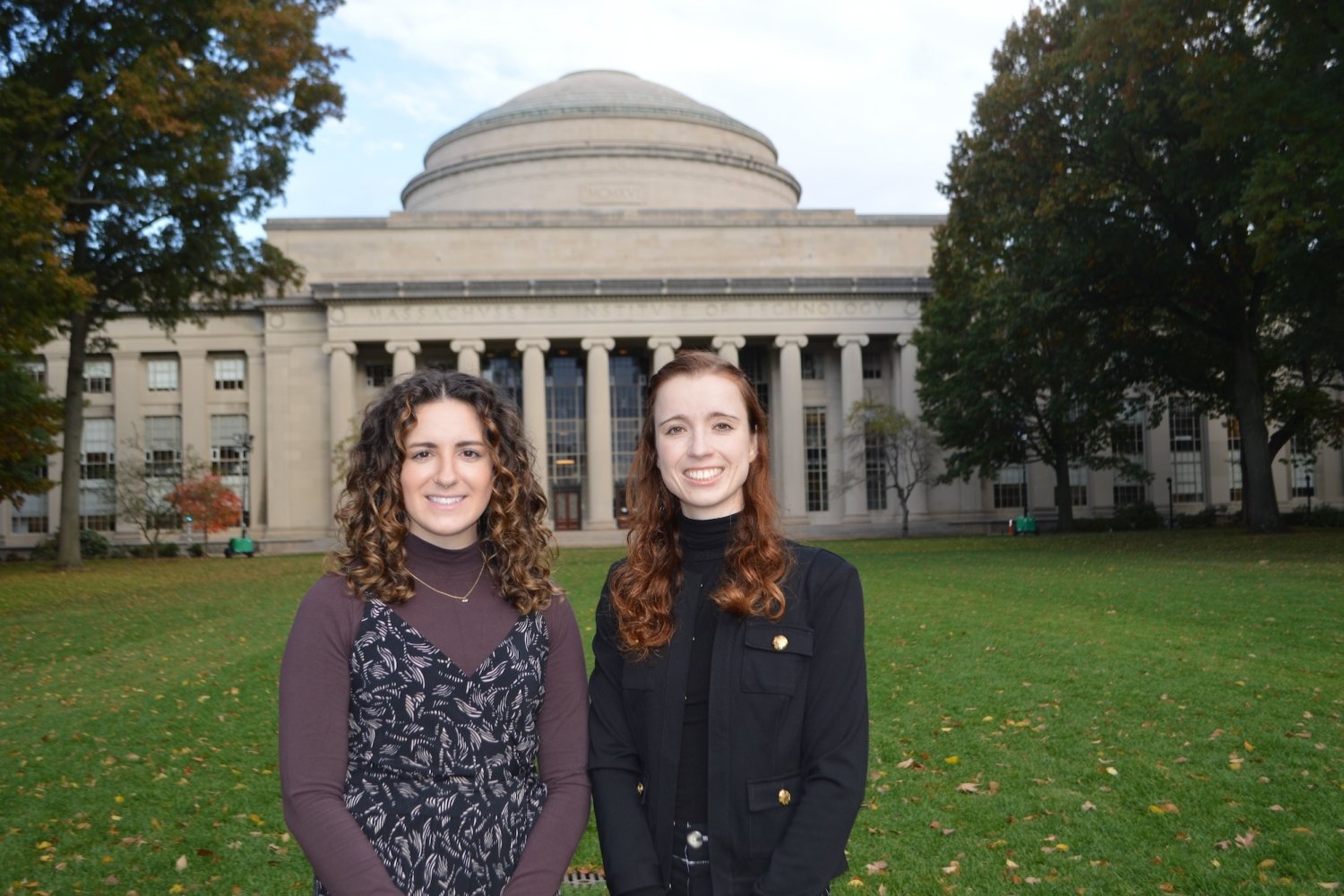
Two MIT graduate students share similar journeys from West Point to MIT.
Stephanie Martinovich | Department of Civil and Environmental Engineering
For graduate students Kelsey Pittman and Jacqueline Orr, service in the U.S. military led to their interest in engineering, and to the MIT Department of Civil and Environmental Engineering (CEE).
Pittman’s first exposure to the military and engineering took place during her undergraduate years at the United States Military Academy West Point.
“I remember back in high school, my dad kind of planted the seed of going to a military academy,” says Pittman. While she admitted to feeling overwhelmed about the prospect of going to college at that time, her father’s rationale for West Point resonated with her. “I’m a structured person and I like routine,” she says — two aspects the environment at West Point provides.
While Pittman’s father hadn’t attended a military academy or served in the military, he was a member of the Federal Bureau of Investigation for 25 years, and her family connections provided Pittman with valuable perspectives on West Point. It ended up being the only undergraduate program Pittman applied to. “I just wanted to be part of something bigger than myself, and all the opportunity West Point could give was pretty incredible,” she says.
Pittman’s parents also recognized her passion for design and encouraged her to consider a career in architecture. Although West Point didn’t offer an architecture program, she chose civil engineering, a field that allowed her to combine her love of math and design.
After graduating, she was commissioned as an engineer officer in the U.S. Army and has served for over seven years. She is now pursuing her graduate education at MIT in structural engineering with advisor John Ochsendorf, professor of civil and environmental engineering and architecture. Pittman is researching Gothic-style infrastructure for its masonry resiliency and stability over time, specifically Beauvais Cathedral and its structural safety. One of the reasons she chose to pursue her graduate studies in CEE was the department’s openness to explore diverse research opportunities.
“I was really drawn to the ability to carve my own research niche and have the freedom to figure out what really interests me, rather than being presented with a limited set of research options,” says Pittman.
After receiving her master’s degree, Pittman will return to West Point as a faculty member for three years and then continue her service obligation in the Army. She credits her mentors at West Point as being instrumental in her academic and professional journey and hopes to play a role in shaping the lives of future generations of cadets.
“I have incredible mentors that I still talk to, and I really wanted to be able to go back and give back to a place, and the people that gave me so much support and room to grow and find my passion. Every step has been made in my career so far to get back to West Point and teach in the civil engineering department.”
Pittman also acknowledges and values the Army for the opportunities it has provided her, particularly the chance to pursue her master’s degree at MIT, the relationships she has built along the way and career path it has opened.
“I’ve enjoyed getting to know the soldiers from all over the world and seeing them in this environment where you might give each other a hard time, but at the end of the day you know that you have each other’s back.”
Jacqueline Orr, also a U.S. Military Academy graduate, is currently pursuing a master’s degree in structural engineering under the guidance of Josephine Carstensen, the Gilbert W. Winslow Career Development Associate Professor for Civil and Environmental Engineering. Inspired by her father to pursue a strong foundation in math and science, she earned a bachelor’s degree in mechanical engineering. After graduation, she fulfilled her service obligation and served for six years as a member of the 173rd Airborne Brigade based in Vicenza, Italy — a unit renowned for its history, combat readiness, and crucial part of the Army’s joint integration with NATO.
Reflecting on her experience, Orr says, “Airborne units, like many great units in the Army, require overcoming an additional litmus test — in this case, conquering the fear of jumping from high-performance aircraft, hundreds of feet above the ground.”
While she enjoyed her time in the Army, her experiences ultimately led her to pursue a career more closely aligned with her passion for engineering. “When I was studying mechanical engineering, I developed a strong interest in structures during my senior design project,” she says.
She particularly enjoyed learning how to model structures and analyze how they respond to various forces. She felt that the traditional methods taught in her classes lacked an optimization component, which sparked her interest in topology optimization as a potential solution.
This desire to further explore topology optimization — specifically in relation to structures and their behavior under different forces — motivated her to seek graduate programs specializing in this field. Orr applied for and was awarded a Department of Defense (DoD) SMART Scholarship that brought her to MIT to study topology optimization in the Carstensen Lab.
“MIT was the ideal institution to pursue this research due to Professor Carstensen’s expertise and innovative work happening in the civil and environmental engineering department,” Orr says.
Looking ahead, Orr plans to apply the knowledge gained at MIT to a research-oriented career as part of her obligation as a DoD SMART Scholar. But for now, she’s adjusting to life as a graduate student. “I’m really enjoying my classes and getting to know people in the lab — it’s been an amazing experience,” she adds.
